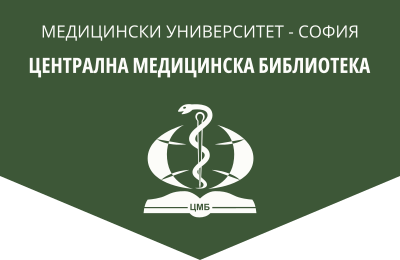Immune deCarbapenemases in clinically significant microorganisms from the order Enterobacterales – characterization. Problems in the treatment and control of infections
Bulgarian Medical Journal, 2024, 18(1), 13-22.
E. Keuleyan1 R. Vazharova2,3, D. Hamidov2, T. Todorov2,3, A. Syarov2,3, L. Belenska-Todorova3
1 Laboratory of Clinical Microbiology and Virology, University Hospital “Lozenets” – Sofia
2 Laboratory of Medical Genetics and Molecular Biology, University Hospital “Lozenets” – Sofia
3 Department of Biology, Medical Genetics and Microbiology, Faculty of Medicine, Sofia University “St. Kliment Ohridski”
Abstract. Production of the enzymes carbapenemases inactivating carbapenems – the reserve antibiotics for severe infections, poses relevant issues in laboratory diagnosis, disease therapy and the methods of disease confinement. The objective of the present work is to review the enzymes and their roles emphasizing current therapeutic approaches and the requirements in control of infections. A literature review was made based on publications in the Bulgarian and international literature published during the recent years, with the main key words: “carbapenemases in Enterobacterales”, “classes”, “epidemiology”, “laboratory diagnosis”, “clinical significance”, “therapy”, “control of infections”, “new antibiotics”, “recommendations”. Also, the authors’ own experience is shared. The production of carbapenemases is almost always determined by extrachromosomal genes positioned on mobile structures. Participating carbapenemases are referred to three different classes of β-lactamases: Class A (with the most common representatives being KPC), Class B, metallo-β-lactamases (MBLs) (with the most common being NDM), and Class D (OXA-48), which are characterized with different sensitivity to antibiotics. Thus, laboratory confirmation and determination of enzymes is required. Until now, the representatives of all classes were isolated in Bulgaria. In severe infections, two times higher mortality was recorded and still no categorical recommendations on therapy are available, although production of new antibiotics is in process. Recommendations for confinement of spread of strains with carbapenemases were issued, in which following the standards and contact precautions in control of infections is imposed. The second approach to their confinement is using a rational antibiotic policy (antimicrobial stewardship). Solution of the problem of carbapenemases in Enterobacterales requires assuming higher levels of responsibility on the part of: healthcare managers, physicians prescribing antibiotics, microbiologists performing laboratory diagnosis, and all specialists participating in control of infections.
Key words: carbapenemase-producing Enterobacterales, laboratory identification, antibiotic therapy, measures in control of infections
Address for correspondence: Prof. Dr Emma Keuleyan, Laboratory of Clinical Microbiology and Virology, UMHAT „Lozenets“, Bg – 1407 Sofia, 1 Kozyak St., e-mail: eekeuleyan@abv.bg
